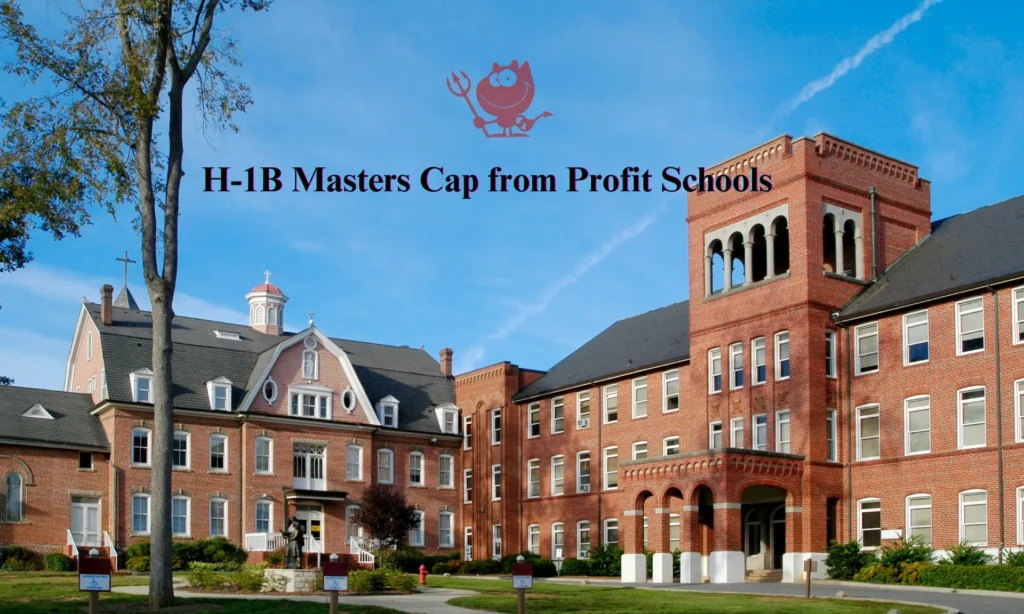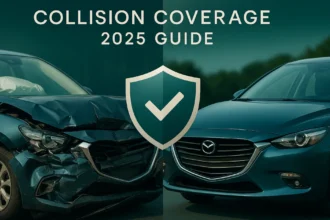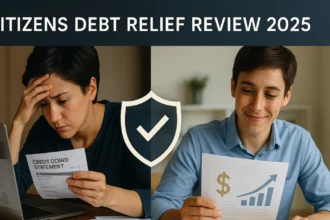
For international students pursuing higher education in the United States, understanding the H-1B visa process is crucial for their professional future. One particularly complex aspect is the relationship between masters degrees from for-profit schools and H-1B visa caps. This comprehensive guide explores why profit school masters degrees don’t qualify for the advantageous H-1B masters cap and what this means for international students.
Understanding the H-1B Cap System
Regular Cap vs. Masters Cap
The H-1B visa system operates under two main caps:
- Regular Cap: 65,000 visas (including 6,800 reserved for Chile and Singapore)
- Masters Cap: Additional 20,000 visas for qualified U.S. advanced degree holders
The Masters Cap Advantage
Selected statistics show the significant advantage of qualifying for the masters cap:
- Higher selection probability (two chances in the lottery)
- Historical selection rates 15-20% higher than regular cap
- Faster processing times in many cases
Why Profit School Masters Degrees Don’t Qualify
Legal Framework
The key legislation governing masters cap qualification comes from Section 101(a) of the Higher Education Act of 1965. To qualify, institutions must be:
- Public or private non-profit
- Accredited by recognized agencies
- Legally authorized to provide post-secondary education
Impact on For-Profit Institution Graduates
Students with masters degrees from for-profit institutions face several challenges:
- Automatic disqualification from masters cap consideration
- Limited to regular cap registration
- Reduced selection probability
- Potential confusion during registration process
Real-World Examples and Case Studies
Common For-Profit Institutions
Notable examples of for-profit institutions whose graduates don’t qualify:
- DeVry University’s Keller School of Management
- University of Phoenix
- Strayer University
- American InterContinental University
Case Study 1: The Additional Degree Strategy
Maria’s Journey: DeVry MBA to State University Success
Maria completed her MBA from DeVry University’s Keller School of Management while working on OPT. Upon learning her degree wouldn’t qualify for the masters cap, she:
- Enrolled in a one-year graduate certificate program at a state university
- Maintained employment through CPT during studies
- Successfully qualified for the masters cap with her new credential
- Secured H-1B approval in her first lottery attempt
Key Strategy: Using a shorter, qualifying graduate program to become eligible for the masters cap while maintaining legal status.
Case Study 2: The Career Pivot Solution
James’s Path: University of Phoenix to L-1 Visa
After completing his masters from the University of Phoenix, James took an alternative approach:
- Accepted a position with a multinational company’s Canadian office
- Worked there for one year, developing specialized knowledge
- Transferred back to the U.S. under L-1B visa
- Eventually transitioned to EB-2 green card through employer sponsorship
Key Strategy: Leveraging international employment opportunities to access alternative visa categories.
Case Study 3: The Entrepreneurial Route
Sarah’s Innovation: From Strayer University to E-2 Success
Sarah, a British citizen with a masters from Strayer University, created her own path:
- Used her profit school masters to develop a solid business plan
- Invested substantial capital in a U.S. startup
- Qualified for E-2 treaty investor visa
- Built a successful business employing U.S. workers
Key Strategy: Using entrepreneurial skills and investment capabilities to pursue alternative visa options.
Case Study 4: The Strategic Industry Switch
Kumar’s Transition: For-Profit MBA to O-1 Visa
Kumar transformed his career trajectory after his for-profit MBA:
- Focused on developing extraordinary ability in AI/ML
- Published research papers in prestigious journals
- Secured speaking engagements at major conferences
- Qualified for O-1 visa based on extraordinary ability
- Later transitioned to EB-1 green card
Key Strategy: Building exceptional credentials in a specialized field to qualify for merit-based visa categories.
Case Study 5: The Non-Profit Partnership
Michael’s Creative Solution: Corporate to Non-Profit Bridge
Michael, after completing his masters from American InterContinental University:
- Partnered with a qualifying non-profit organization
- Structured employment through a non-profit research institute
- Qualified for H-1B cap-exempt position
- Gained valuable experience while building long-term career options
Key Strategy: Exploring cap-exempt employment opportunities through non-profit organizations.
READ ALSO: Biden Student Loan Forgiveness Plan: Eligibility, Impact, and Complexities
Common Success Factors
1. Early Recognition and Action
Successful candidates typically:
- Identified the limitation early
- Sought professional guidance
- Developed alternative plans before status expiration
2. Multiple Parallel Strategies
Most success stories involved:
- Pursuing multiple options simultaneously
- Maintaining backup plans
- Building diverse skill sets
3. Network Utilization
Successful transitions often included:
- Building professional networks
- Connecting with alumni in similar situations
- Engaging with industry professionals
4. Professional Guidance
Key support included:
- Immigration attorneys
- Career counselors
- Industry mentors
- Educational advisors
Lessons Learned
- Proactive Planning
- Start strategizing immediately upon learning of limitations
- Research all available options
- Consider long-term career implications
- Skill Development
- Focus on building extraordinary abilities
- Pursue additional certifications
- Develop unique expertise
- Status Maintenance
- Ensure continuous legal status
- Plan transitions carefully
- Maintain employment authorization
- Financial Planning
- Budget for additional education if needed
- Consider investment options
- Plan for potential international moves
Strategic Takeaways
For Current Students
- Begin planning alternative paths early
- Build diverse skill sets
- Develop international connections
- Consider additional qualifying education
For Recent Graduates
- Explore immediate alternative visa options
- Build exceptional credentials
- Consider international opportunities
- Investigate entrepreneurial paths
Resources for Success
Professional Networks
- Alumni associations
- Professional organizations
- Industry-specific groups
- Immigration support networks
Educational Opportunities
- Certificate programs at qualifying institutions
- Specialized training programs
- Professional certifications
- Advanced degree options
Career Development
- Industry mentorship programs
- Professional development workshops
- Leadership training
- Specialized skill development
These success stories demonstrate that while a masters degree from a for-profit institution presents unique challenges for H-1B visa qualification, multiple alternative paths exist for determined professionals. The key lies in early recognition of limitations, strategic planning, and willingness to pursue creative solutions.
Solutions and Alternatives
For Prospective Students
- Careful School Selection
- Research institution status before enrollment
- Verify accreditation and non-profit status
- Consider transfer options if currently enrolled
- Alternative Immigration Pathways
- Other visa categories (L-1, O-1, etc.)
- Employment-based green cards
- Further education at qualifying institutions
For Current Profit School Students
- Immediate Actions
- Consultation with immigration attorneys
- Evaluation of current status
- Development of alternative strategies
- Long-term Planning
- Additional education options
- Career pathway adjustments
- International employment opportunities
Industry Trends and Future Outlook
Current Statistics
- Percentage of international students at for-profit institutions
- H-1B selection rates comparison
- Employment trends for profit school graduates
Future Considerations
- Potential policy changes
- Industry adaptation
- Educational institution responses
Expert Recommendations
For Students Considering Profit Schools
- Due Diligence Steps
- Verify institution status
- Research employment outcomes
- Consider long-term immigration goals
- Financial Considerations
- Cost-benefit analysis
- Alternative program options
- Return on investment calculations
For Current Profit School Students
- Immediate Actions
- Status evaluation
- Alternative planning
- Professional consultation
- Long-term Strategy
- Career path adjustment
- Additional education planning
- Alternative visa options
Legal Considerations and Compliance
Registration Process
- Accurate Cap Selection
- Proper category identification
- Documentation requirements
- Verification processes
- Common Mistakes to Avoid
- Misidentifying institution status
- Incorrect cap selection
- Incomplete documentation
Compliance Requirements
- Institution Verification
- Accreditation status
- Non-profit status
- Degree conferral timing
- Documentation Needs
- Degree verification
- Institution status proof
- Supporting evidence
Conclusion
The distinction between profit and non-profit school masters degrees significantly impacts H-1B visa opportunities. Understanding these differences early in the educational planning process is crucial for international students. While profit school graduates face additional challenges, various alternative pathways and strategic planning can help achieve long-term immigration goals.
Key Takeaways
- Profit school masters degrees don’t qualify for the H-1B masters cap
- Early planning and institution verification are crucial
- Alternative pathways exist for profit school graduates
- Professional guidance can help navigate challenges
Schedule a consultation with an immigration attorney to evaluate your specific situation and develop a tailored strategy for your immigration journey.
Frequently Asked Questions
Q: Can I switch from a profit school to a non-profit school to qualify for the masters cap?
Yes, but the qualifying degree must be completed before H-1B filing.
Q: Does work experience compensate for a non-qualifying masters degree?
No, work experience cannot substitute for a qualifying U.S. masters degree for cap purposes.
Q: Can I file under both regular and masters cap?
No, you must choose one category, and profit school graduates are limited to the regular cap.
Q: Will my profit school degree still help me qualify for an H-1B visa?
Yes, the degree can still help qualify for the regular cap H-1B requirements.
In another related article, Qatar Airways Privilege Club Visa Infinite Credit Card: A Premium Travel Companion for Avid Qatar Airways Loyalists





